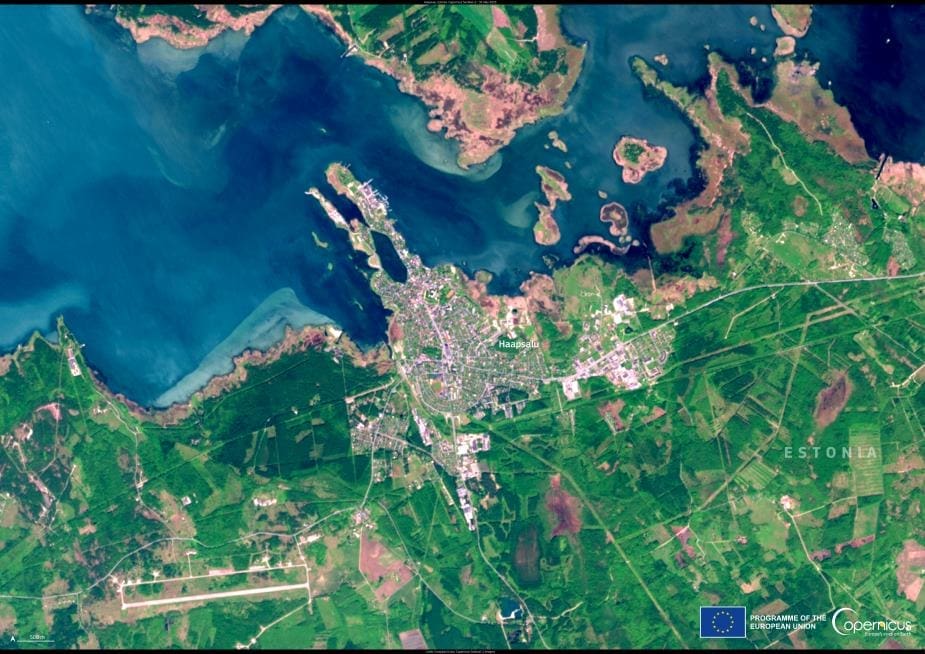Haapsalu, a picturesque coastal town on Estonia’s western shore, lies just over an hour’s drive from the capital, Tallinn. Nicknamed the Venice of Northern Europe, this small, romantic resort town has been renowned for its mud baths since the early 19th century. The first spa opened in 1825, but the healing properties of Haapsalu’s sea mud were prized long before that, drawing wellness seekers to its calm bay for centuries.
In this Copernicus Sentinel-2 satellite image, acquired on 31 May 2025, Haapsalu appears nestled between peninsulas that stretch into the quiet waters of the Haapsalu Tagalaht Bay. The town’s distinct geography, with inlets and narrow streets surrounded by sea and greenery, is easily visible from above.

Haapsalu’s history as a spa town began when Russian aristocrats began spending their summers here, a tradition that helped shape its development into a cultural and wellness retreat. Today, Haapsalu hosts international music and film festivals, offers peaceful promenades by the water, and invites visitors to explore its 13th-century castle, which now houses a museum and hosts events throughout the year.
With wooden houses, a miniature town hall, and small boutiques selling the town’s famous hand-woven shawls, Haapsalu has retained its charm while embracing its role as a modern-day resort town. The mud spas remain popular, especially in summer, when tourists come for health treatments and scenic walks along the bay.
The Copernicus Sentinel satellites play a vital role in monitoring towns like Haapsalu, offering high-resolution imagery that supports sustainable coastal planning and development. These images provide valuable data for understanding urban expansion, shoreline change, and the impact of tourism on fragile ecosystems.
Featured image credit: European Union, Copernicus Sentinel-2 imagery



